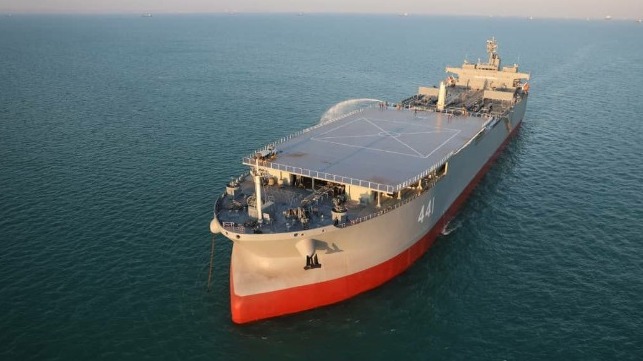Iran's Navy is Powerless to Intervene in Syria or Lebanon

Chief of Staff of the Iranian Armed Forces Major General Mohammad Baqeri has used the occasion of Iran’s recent Navy Day to repeat once again the claim that Iran’s regular Navy (Nedaja) and the IRGC Navy (Nesda) have a ‘powerful presence in international waters’, ‘protecting naval routes and providing security for merchant vessels and tankers’. Iranian Navy Commander Rear Admiral Shahram Irani also frequently claims that his force ‘maintains a strong presence in dangerous waterways infested with threats and terrorists’, presumably not a reference to his own home waters.
Recent events in Lebanon and Syria suggest that the reverse is true, and that Iranian naval forces have not developed a capability to support Iran’s Resistance of Axis activities or to project a persistent presence outside territorial waters. The only station where the Nedaja has been able to maintain a permanent foothold is the Red Sea, where it has kept a small flotilla on rotation since 2008, currently the 100th Flotilla.
The IRGC has stationed large numbers of its own troops and advisers in Syria, plus mercenary units it has recruited from Pakistani and Afghan Shi’a refugees as well as sponsoring contingents of Hezbollah forces supporting the Syrian regime. It has also maintained substantial weapons holdings in the country, ultimately for Hezbollah’s use as well as for its own operations in Syria. There is no evidence that the IRGC has been able to recover any of these assets and resources by sea, even though forces friendly to former President Assad still (as of today) remain in control of the ports of Latakia and Tartus on the Mediterranean coast.
Analysts believe that the Nedaja attempted to deploy the long-range logistics vessel IRINS Makran (K441), seen leaving its berth in the Bandar Abbas Naval Basin on December 4. But the Makran appears to have reversed course and was seen being tugged back onto its pier on December 8, after an absence of four days.

Copernicus / Sentinel-2
The Nesda’s RO-RO logistics vessel Shahid Roudaki (L110-1) has also been absent from its normal berth in Bandar Abbas Naval Basin for several days, and would have been an ideal vessel to uplift valuable air defense systems and missiles as well as personnel. But it has not yet been spotted en route or elsewhere.
 Another Nesda vessel of relevance to Iranian naval reach is on the move. Between November 23 and 28, the Shahid Bagheri (C110-4, left), formerly the 36,000-tonne Korean-built container ship Perarin, was moved from its long-term berth at the ISOICC shipyard west of Bandar Abbas where it was converted. She has since then been seen at anchor in the roads off the Bandar Abbas Naval Basin.
Another Nesda vessel of relevance to Iranian naval reach is on the move. Between November 23 and 28, the Shahid Bagheri (C110-4, left), formerly the 36,000-tonne Korean-built container ship Perarin, was moved from its long-term berth at the ISOICC shipyard west of Bandar Abbas where it was converted. She has since then been seen at anchor in the roads off the Bandar Abbas Naval Basin.
If she follows the same timetable taken by her sister ship the Shahid Mahdavi (C110-3) last year, the Shahid Bagheri should soon embark upon sea trials. These are likely to be closely observed, to gather information on what air vehicles the Iranians intend to launch from its angled flight deck, which terminates in a ski jump to assist take-offs.
Iran has 15 Pilatus PC-6 STOL aircraft still in its inventory, and it might just be possible for a recklessly brave pilot to launch from the flight deck. But he would be advised to have generous life insurance if he were to attempt a return landing. More likely candidates to be seen on the flight deck are long-range drones, but given the topography of the flight deck and the ship’s island, any recoveries attempted are likely to be extremely hazardous.
The opinions expressed herein are the author's and not necessarily those of The Maritime Executive.
